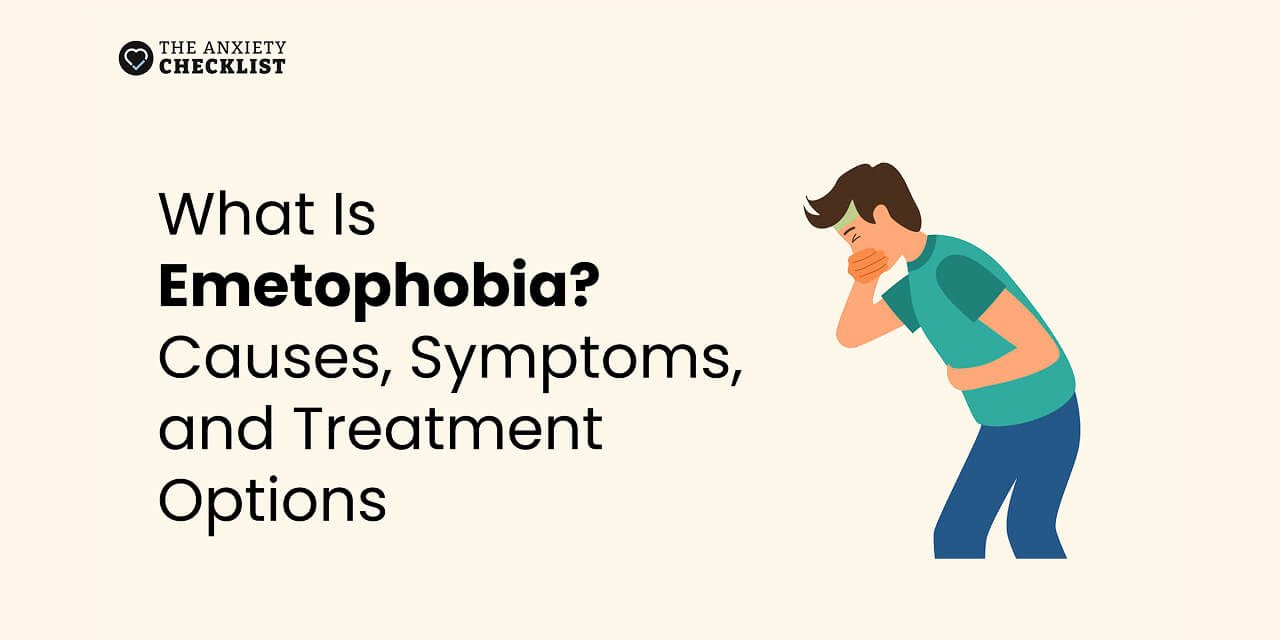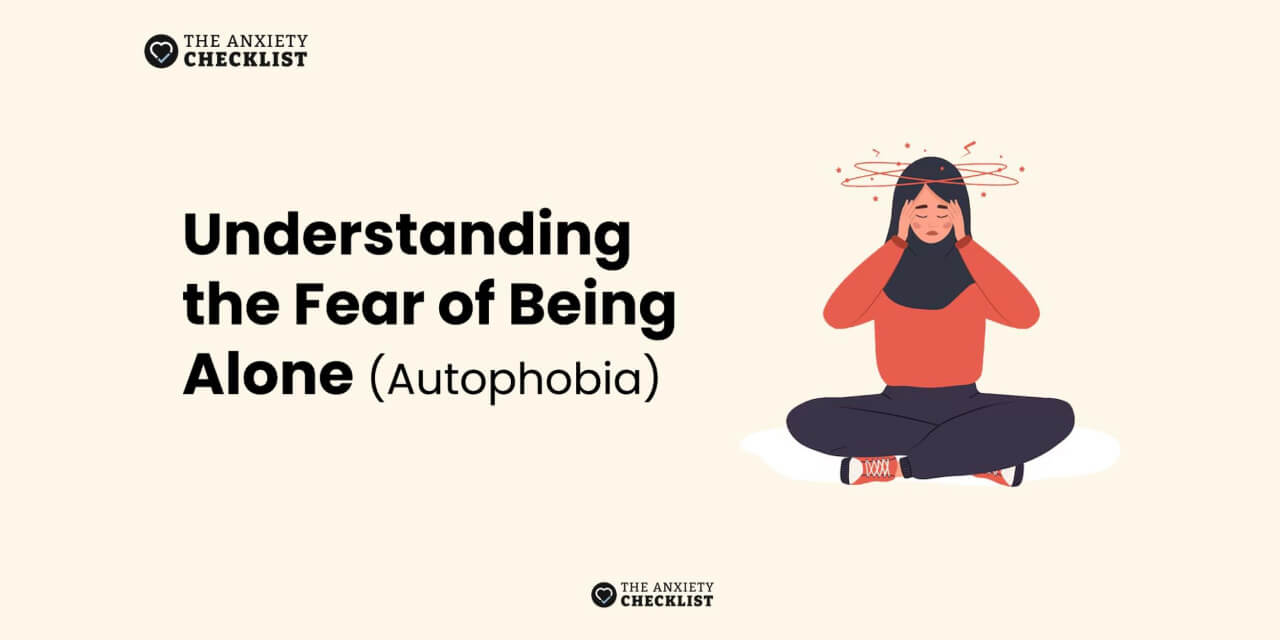What Is Emetophobia?
Symptoms of Emetophobia
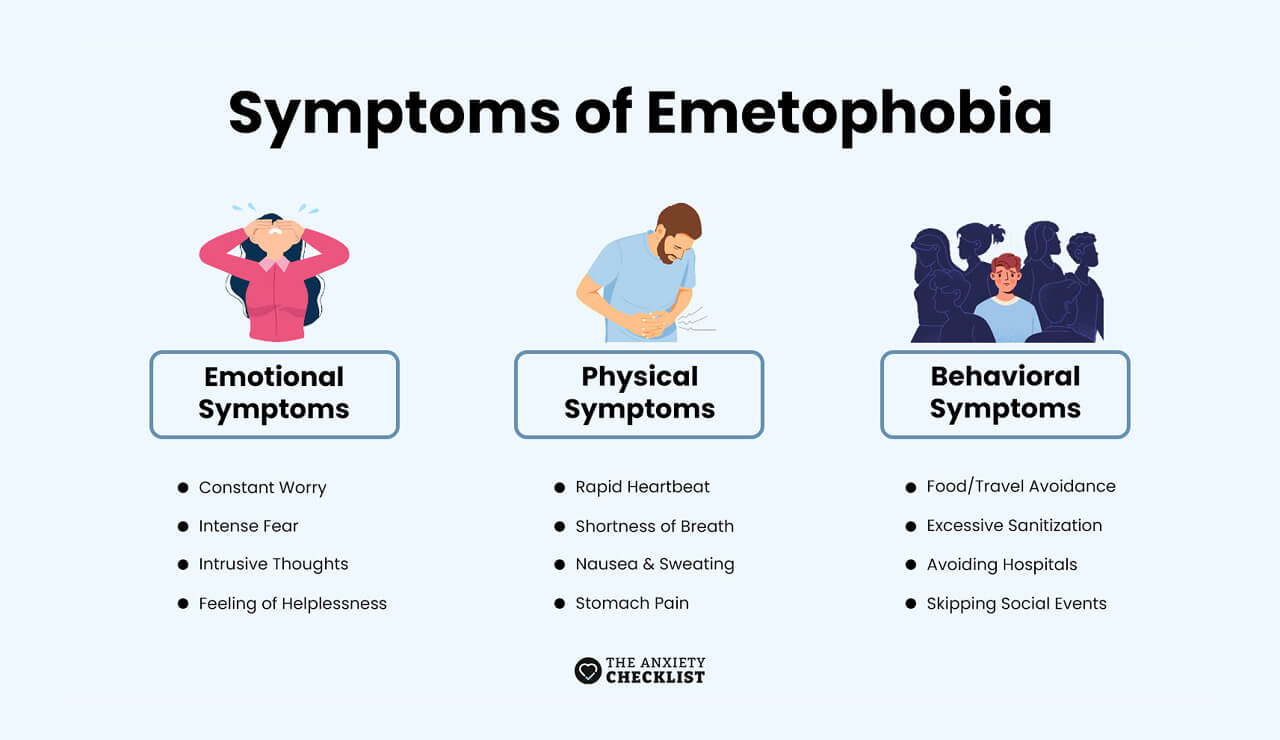
1. Emotional Symptoms
The fear of vomiting can trigger intense anxiety, leading to:
2. Physical Symptoms
Anxiety related to emetophobia can trigger physical reactions like these when thinking about vomit or when it is mentioned. Symptoms include:
3. Behavioral Symptoms
To avoid their fear, people with emetophobia may develop habits that disrupt their daily lives, such as:
Is anxiety holding you back from the life you deserve?
Effect of Emetophobia on Different Age Groups
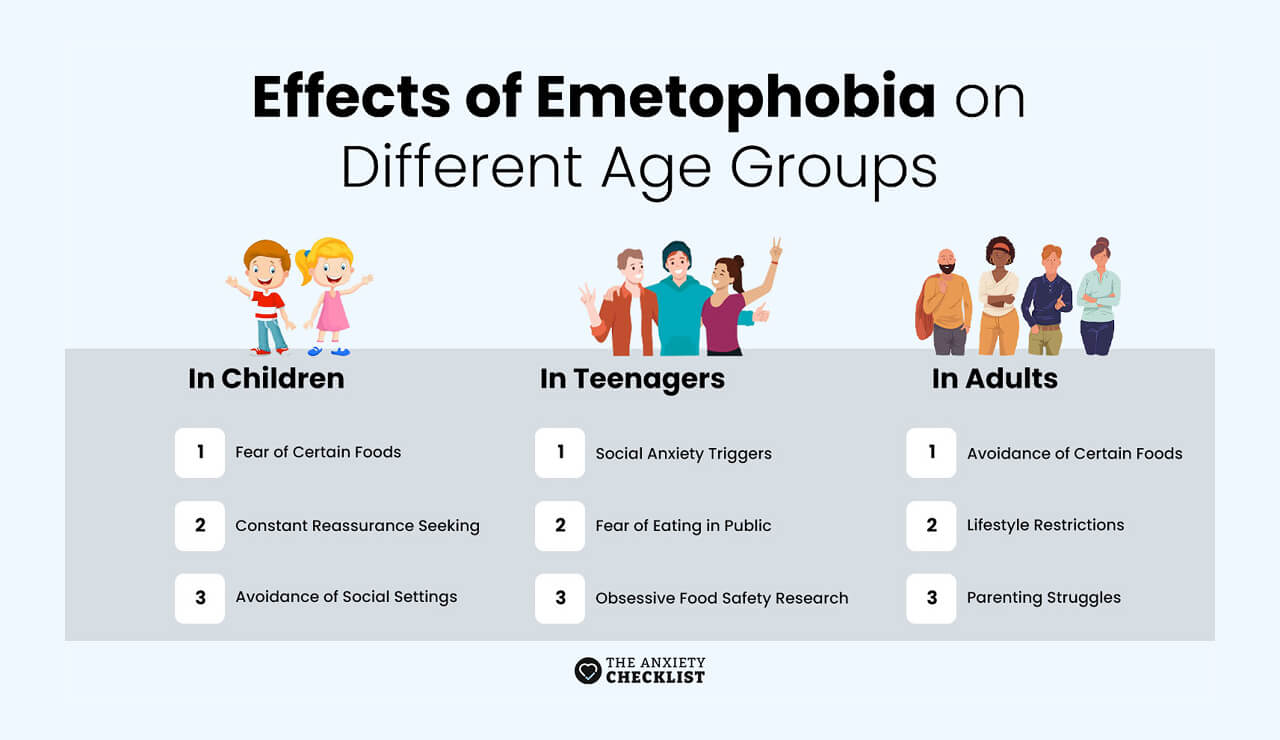
Emetophobia in Children
Emetophobia often starts in childhood, sometimes after a distressing vomiting experience or exposure to someone being sick. Young children may:
Emetophobia in Teenagers
During adolescence, emetophobia may intensify due to increased self-awareness and social pressures. Teens with emetophobia might:
Emetophobia in Adults
By adulthood, emetophobia can significantly shape daily routines and lifestyle choices. Adults with this phobia may:
How Emetophobia Affects Daily Life
Emetophobia can slowly take over daily routines, it can make simple activities feel overwhelming
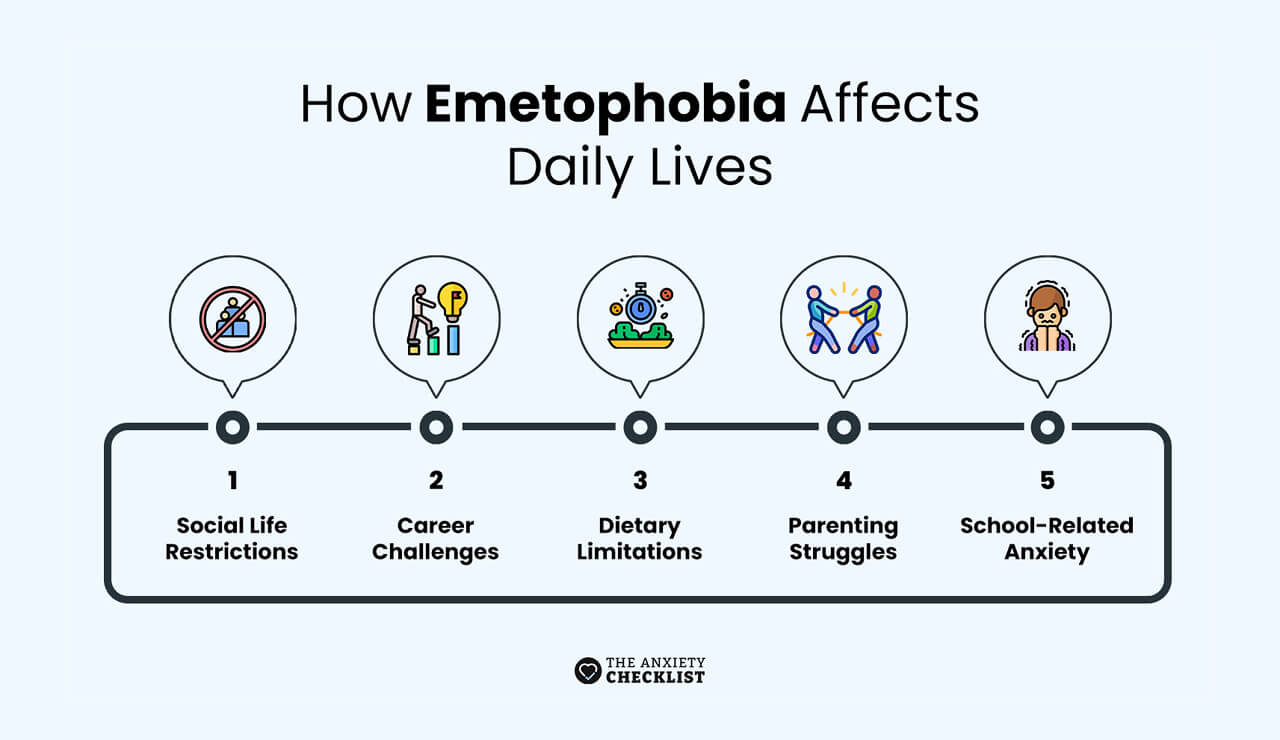
Some common struggles include:
Causes of Emetophobia
Emetophobia often develops from a combination of past experiences, psychological factors, and learned behaviors. While the exact cause varies from person to person, there are several common factors that contribute to its development.
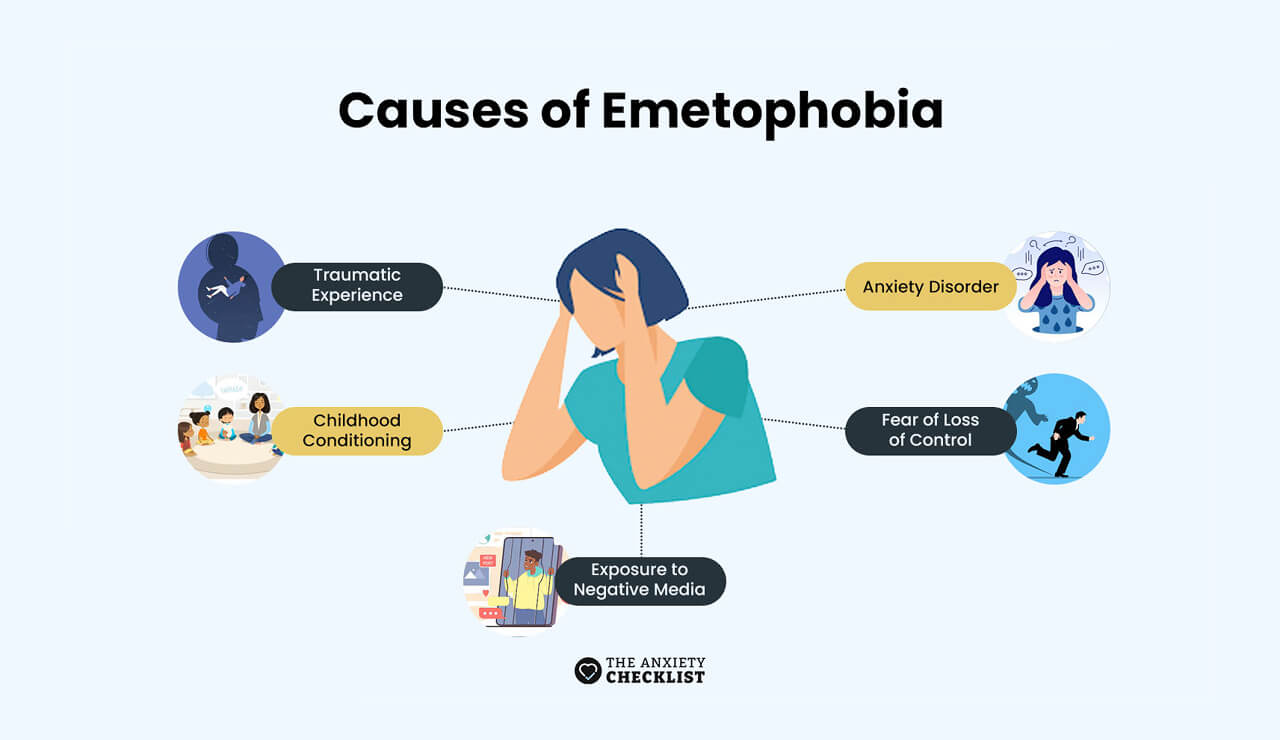
1. Traumatic Experiences
For some, even a single overwhelming experience can leave a lasting impression. Many people with emetophobia can trace their fear back to a distressing experience related to vomiting. This could include:
2. Anxiety Disorders
3. Childhood Conditioning and Learned Behaviors
Children are highly observant, and if they see vomiting as something to fear or avoid, this belief can carry into adulthood. The way vomiting was handled in childhood can also play a role in emetophobia. For example:
4. Fear of Loss of Control
For many with emetophobia, the fear isn’t just about vomiting itself—it’s about the loss of control that comes with it. Vomiting is unpredictable, messy, and often unavoidable, which can be terrifying for someone who relies on control to feel safe.
This fear may also connect to:
5. Exposure to Negative Media or Stories
Some people develop emetophobia after seeing distressing images or stories about vomiting in movies, TV shows, or online forums. Hearing detailed accounts of sickness, particularly from people with similar fears, can make the phobia worse.
Common Triggers for Emetophobia
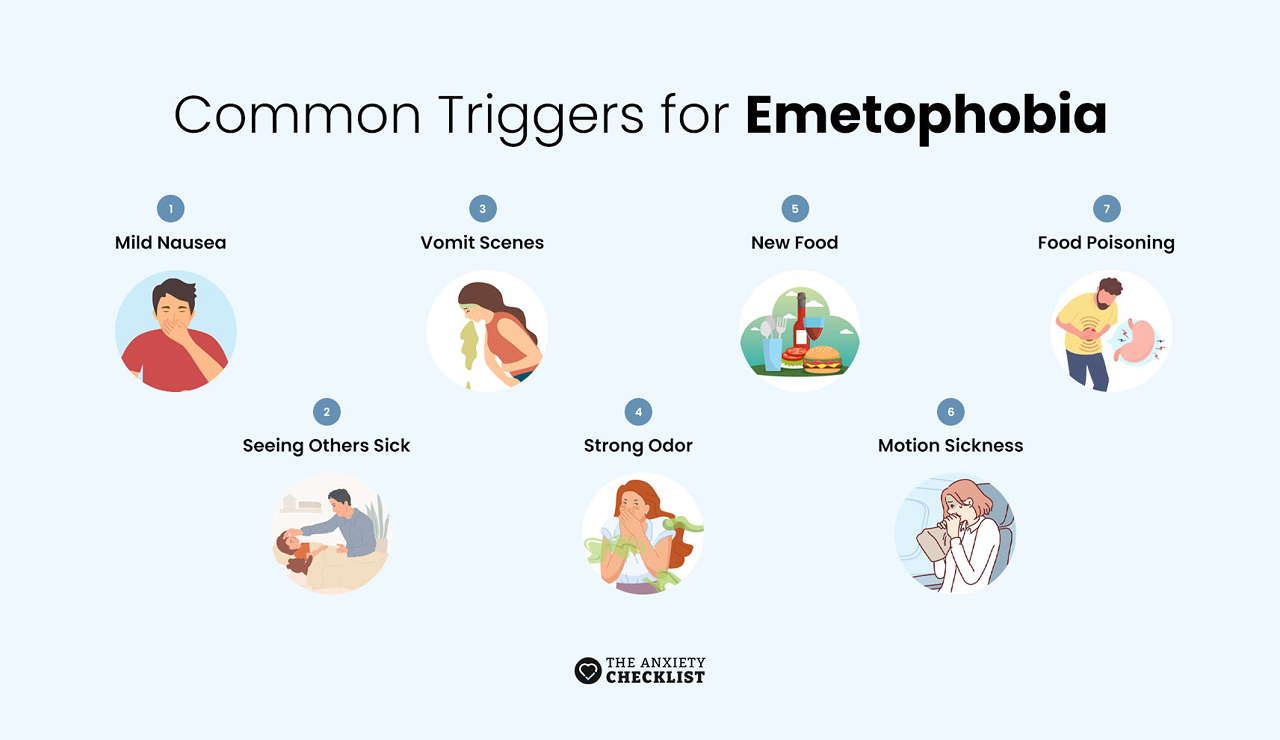
Even without an immediate risk of vomiting, certain situations can trigger intense anxiety, such as:
Emetophobia’s Connection to Other Anxiety Disorders
- Emetophobia is more than just a standalone phobia—it often overlaps with other anxiety disorders.
- Many people with this fear experience symptoms of generalized anxiety, obsessive-compulsive tendencies, or social anxiety, which makes their condition more complex.
- Recognizing the link between emetophobia and other anxiety disorders can help you find more effective treatment options. Here are some anxiety disorders associated with emetophobia.
1. Obsessive-Compulsive Disorder (OCD)
Emetophobia shares similarities with OCD, especially in the way it leads to compulsive behaviors aimed at avoiding vomiting. Some common OCD-like habits include:
2. Generalized Anxiety Disorder (GAD)
3. Social Anxiety Disorder
Emetophobia can heighten social anxiety, as the fear of vomiting in public or embarrassing oneself can lead to isolation. People with this phobia may:
Treatment and Coping Strategies for Emetophobia

1. Therapy and Professional Treatment Options
Therapy is one of the most effective ways to treat emetophobia. Here are some of the most commonly recommended approaches.
Cognitive Behavioral Therapy (CBT)
The use of CBT for anxiety helps reframe negative thoughts and replace them with healthier, more rational perspectives. A therapist can work with you to:
Exposure Therapy (Systematic Desensitization)
Exposure therapy involves gradually facing the fear in a safe and controlled manner. This slow, step-by-step approach helps reduce sensitivity to the fear over time. This can include:
Acceptance and Commitment Therapy (ACT)
ACT focuses on accepting fear rather than fighting it. This approach helps:
Medication
In some cases, medication may be prescribed alongside therapy. Options include:
2. Practical Coping Strategies
In addition to therapy, these are daily strategies that can help reduce emetophobia’s impact.
Breathing and Relaxation Techniques
Anxiety can trigger physical symptoms that mimic nausea. Deep breathing exercises , such as the 4-7-8 technique (inhale for 4 seconds, hold for 7, exhale for 8), can help calm the nervous system.
Mindfulness and Meditation
Mindfulness teaches you to stay present and avoid spiraling into the "what if" thinking. Practices like guided meditation , grounding techniques, or progressive muscle relaxation can help reduce your anxiety levels.
Challenge Avoidance Behaviors
Avoidance strengthens emetophobia, start by making small changes, such as:
Journaling and Thought Reframing
Keeping a journal can help track anxious thoughts and recognize patterns. Challenge negative thoughts by asking yourself questions like:
Support Groups and Online Communities
3. Lifestyle Adjustments to Reduce Anxiety
Emetophobia is closely linked to general anxiety levels. Making lifestyle and dietary changes can help create a sense of stability and control.
Healthy Eating Habits
Regular Exercise
Exercise releases endorphins, reducing stress and improving mood. Activities like walking, yoga, and strength training can help manage anxiety.
Consistent Sleep Schedule
Lack of sleep can increase anxiety and make symptoms feel worse. Aim for 7–9 hours of sleep each night.
Gradual Desensitization to Triggers
Over time, small exposures to triggers can help reduce fear. For example:
When to Seek Professional Help
Recognizing when to seek professional help is very important for managing emetophobia. While some people can cope with mild symptoms on their own, others may need support to regain control over their lives.
You may need professional or medical intervention if:
Types of Professionals Who Can Help
Seeking help is not a sign of weakness, it’s a step toward reclaiming your life. With the right support, emetophobia can be managed, and the fear can lessen over time.
The following professionals can help with emetophobia:
Frequently Asked Questions
Many people see success through therapy (especially CBT and exposure therapy), coping strategies, and gradual desensitization to triggers.
You may have emetophobia if you:
Empathy and education are key to supporting a loved one through their recovery.
If someone you care about struggles with emetophobia, you can help by:
Recovery takes time, but progress is possible with the right approach. The first step is recognizing how fear impacts your life. From there, you can:
Conclusion
Next Article
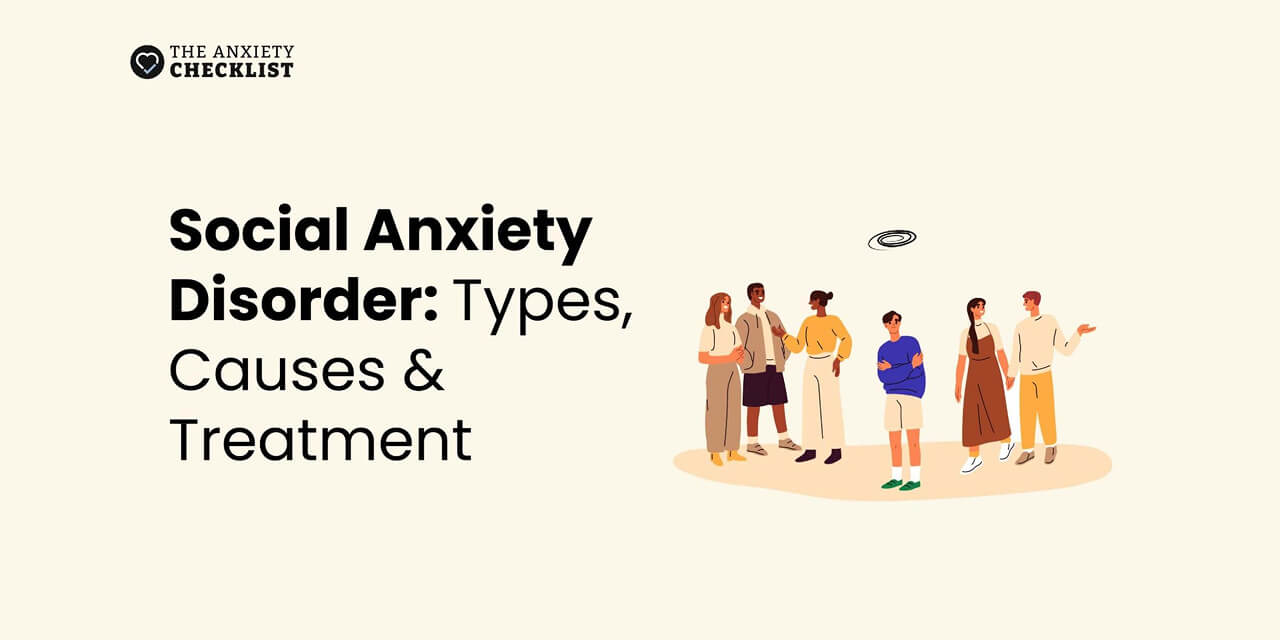
Social Anxiety Disorder: Types, Causes & Treatment

Advertisement
BetterHelp
BetterHelp makes starting therapy easy. Get a tailored therapist match based on your needs and preferences - in as little as 24 hours!
Enjoy 20% off your first month with code "anxietycheck"

4 million+ Helped
Access Therapy 24/7
Preferred by 94% of users
If you are in a crisis or any other person may be in danger - don't use this site. These resources can provide you with immediate help.


